Towards a Working Method of Audience Movement
On a summer evening in 1990, Adam and Elena Emery, a young married couple, were sitting in their car near Rocky Point in Warwick, Rhode Island, when they were sideswiped by another car. Adam gave chase, and pulled over a car driven by twenty-year-old Jason Bass. An altercation ensued in which Adam fatally stabbed Jason in the heart. Paint scrapings later determined that the car driven by Jason was not the car that hit the Emerys, and that they had accidentally confronted the wrong person. On November 10, 1993, Adam was convicted of second-degree murder. He was released on bail after his conviction. The Emerys’ car was found abandoned that night on the Newport Pell Bridge above the Narragansett Bay. Authorities initially suspected that they faked their suicides and escaped. Nine months later, Elena’s skull was dredged up by a fisherman's net. Adam's body was never found.
On November 3 and 4, 2012, my piece, The (unfinished) Ballad of Adam and Elena Emery, was performed at the Mathewson Street United Methodist Church (MSUMC) in downtown Providence, Rhode Island. The piece was an evening-length work for four dancers, eleven musicians, and a series of multimedia installations and performance settings that occurred in a dozen rooms. The (unfinished) Ballad... was a “roving” performance: one in which both the performers and audience moved throughout the building, encountering a performance based on dreams and echoes, fragmented words, images, sounds, and objects inspired by the heartbreaking story of the Emerys and Jason Bass.
In this discussion, I will present a “working method” of roving performances that I have developed based on my two-year experience working on this piece. It will include a short list of major concerns and choices that artists who develop roving audience pieces need to consider: in essence, a collection of information I wish I had when I began this project. My aim is to encourage other composers, directors, and producers to consider using audience movement as a part of their creative palate.
In roving performances, an audience member’s perspective is constantly changing, not just mentally or narratively but physically: new viewpoints of performers and their spatial relationships to the audience develop and change continuously.

Roving Performances and The (unfinished) Ballad...
There is a mixed lineage of performance work involving audience movement, from ancient parades and processions, to Fluxus non-genre “Happenings,” to Punchdrunk’s wildly successful Sleep No More. Yet despite these examples, roving performances in which both the audience and performers move freely are still surprisingly rare. In roving performances, an audience member’s perspective is constantly changing, not just mentally or narratively but physically: new viewpoints of performers and their spatial relationships to the audience develop and change continuously. For me, this format and its uncertainties seemed perfect for The (unfinished) Ballad.... I do not know what happened to Adam Emery, nor do I pretend to add anything new to the story. The piece is not about “getting to the bottom” of this case, nor is it even necessarily about healing, since both are beyond my skill, knowledge, and the scope of the performance. It is about attempting understanding through placing a group of friends, strangers, and performers into a large-scale roving multimedia performance inspired by whispers and echoes from this horrifying story. To me, this story and its circumstances are incomprehensible, and this incomprehensibility is the focus of the piece: it is where the “(unfinished)” comes from.
Roving performances can be a useful format for artists in expressing ideas or stories that lend themselves to this mercurial interpretation. Although such pieces can be complicated, I believe the incorporation of a moving audience is a technique that can be studied, practiced, and refined to meet an artist’s needs, just like any other technique in her repertoire.

Working Method of Audience Movement
There are inherent difficulties in roving performance pieces, both in terms of logistics and expression. The logistical difficulties are obvious. The concerns with moving an audience around a space span from issues of safety and accessibility to ones of motivation: how do we enable an audience to move around a particular space, and how do we motivate them to move at all? The vast history of immobile audiences viewing artwork or performances presented on a stage provides an inertia that can be difficult to overcome. Along with these concerns, developing a method and technique of expression in a performance work that incorporates audience movement can also prove challenging for the creator. She will have to embrace a certain loss of control, and even prepare for it, in order to make a piece that effectively uses audience movement.
I am convinced there are certain clear, distinguishable concerns that need to be negotiated by the composer of a roving performance and incorporated into his or her piece. Although I call this discussion a “working method,” I am not suggesting a step-by-step instruction manual. Through my modest experience, however, I have identified three major issues that seem to be very common—if not universal—among roving performance work, and which composers of this work must address.
1. Developing a “Language” of a Roving Performance
The “language” of a roving piece is defined by the process through which the audience learns its relationship with the piece, what is permitted or expected of them, and how to move through the piece. It is the collection of terms—rules, circumstances, premises, or defined roles—in which the dialogue between the composer, performers, and the audience takes place. The way the audience moves is part of the expression of the piece, and as such, composers are compelled to make decisions based on their desired outcome, whether it is complete control or a complete relinquishing of control over audience movement. This should be approached as an expressive tool with tremendous possibility rather than an expository/conceptual burden.
In The (unfinished) Ballad... I introduced this language primarily in an opening reception. Audience members were led into a large open room in which the performers they would later encounter served drinks/snacks. They were presented with a brief, stylized program, which included an explanation of the roving aspects of the piece and a small map of the building. The room was mostly free of chairs to encourage movement between cocktail tables that had centerpieces with more information related to the piece and the murder story. I also gave the audience a significant amount of time (about fifteen minutes) in this space to become comfortable moving amongst the dancers and musicians, who subtly began to perform.
2. Repetition and Unity
Audience members are bombarded with information in a roving performance. Along with the usual trauma/drama of attending a performance, they are also moving around and constantly shifting their perspective on the performance while navigating the environment. All of this affects their process of making meaning of the performance. It is helpful as a composer to provide the audience with a strong sense of unity within the piece. Every component in the performance (performers, media, technology), along with the movements of the performers and the audience should all belong to the world of the roving performance.
I utilized a number of recurring items—spoken phrases, images, objects, melodies—to help create this unity in my piece. For instance, a small quote by Adam Emery in a newspaper would be heard as a whisper in an audio installation at one point, would be sung by a soprano in the basement at another point, and would be muttered by the dancer playing Adam Emery to a single audience member at yet another moment. I found this pervasive use of repeated material to be a flexible creative tool. It allowed me to experiment with how small sounds and images could be retranslated in various settings within the environment of the piece.
3. Use of Space in Roving Performances
The spaces in which roving performances are set are critically important to the composer and performers. The two main issues that need to be confronted are the physical attributes of the space, and the historical or cultural meanings associated with that space.
While developing The (unfinished) Ballad..., a particularly narrow hallway posed a design challenge. It was clear that the hallway would become a choke point: it was barely wide enough for two people to pass each other. I ended up turning a section of it into an audio installation composed of sixteen small, hanging speakers playing various sounds and whispered voices. Its purpose was to provide an ambient, spatialized soundscape. I knew this space would get crowded and people would queue up at various times. My aim was to use this characteristic to force the moving audience to spend more time experiencing the installation in this claustrophobic space than they would if allowed to move quickly through it.
To me, the alternatingly peaceful, expansive, cozy, and creepy building was the perfect space to explore different aspects of an inexplicable murder story.
The MSUMC has a long history as both a spiritual meeting place and a site for social service-based community building and outreach. It is a hub of service in Providence, and many people came into the piece with deep connections to the building. To me, the alternatingly peaceful, expansive, cozy, and creepy building was the perfect space to explore different aspects of an inexplicable murder story. However, I could have done more to directly integrate the history and current status of the building into the piece.
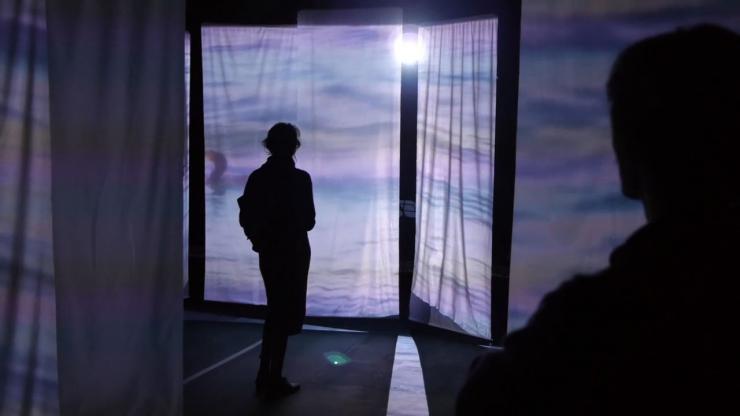
Sample Techniques for Audience Motivation, Practice Time
One important technique I employed was the use of performers to lure and motivate the audience. In a roving performance, the tendency for most audience members is to follow a performer. There is a natural drive not to “miss anything,” yet I did not want to create an overpowering gravity towards the performers, which might stifle free movement. I decided to use the best asset I had available at the performance: a group of highly talented musicians. Sound travels around corners and can attract people without their seeing the source. In many instances, my placement of the musicians was based on how effectively they could direct the attention of the audience and motivate them to move toward new spaces: a fanfare would turn their attention to a door, a somber solo violin might coax them into a dark hallway.
Along with the usual rehearsals of the performance scenes, it is important for the composer of a roving performance to rehearse audience movement. I can imagine how an audience might move down a particular hallway or up a particular staircase, but I cannot know how a large audience would move and behave unless I tested it. I was fortunate to have six full months to develop the piece inside the MSUMC. I had a number of test runs of various parts of the piece with as large a sample audience of friends/colleagues as I could gather, and was able to evaluate and make decisions based on the exchanges between the piece and the audience. This experience proved invaluable in the development of the piece. Although it was a luxury to have had so much time in the space to practice and prepare for the roving audience, I believe it was a necessity. Incorporating audience movement into a performance is a technique and process that is learned and honed over time.
***
The three issues of roving performance mentioned here—language, unity, and space—are concerns shared by most (if not all) performances that involve audience movement. The ways in which composers of these pieces confront these issues is part of both the art and skill involved in creating them. Roving performances involve a careful negotiation between the composers, performers, audience members, and the physical and historical spaces in which they are set. People and places are often prejudiced, and these performances do not occur in a vacuum: their reception will be colored by the histories of both the audience members and the performance sites. Because they do not exist in the abstract world of the stage or screen, these pieces will not be experienced abstractly. Their relationships to the audience and the space in which they exist have to be carefully considered and developed physically. This can be a complicated and messy process, but the creative and expressive potential of building a successful roving performance is enormous.
Photo credit for all images: Arvid Tomayko-Peters
Image: Backstage: Stephanie Turner and Brandon Shaw
Image: Stairwell: Aliana de la Guardia
Image: Curtain room

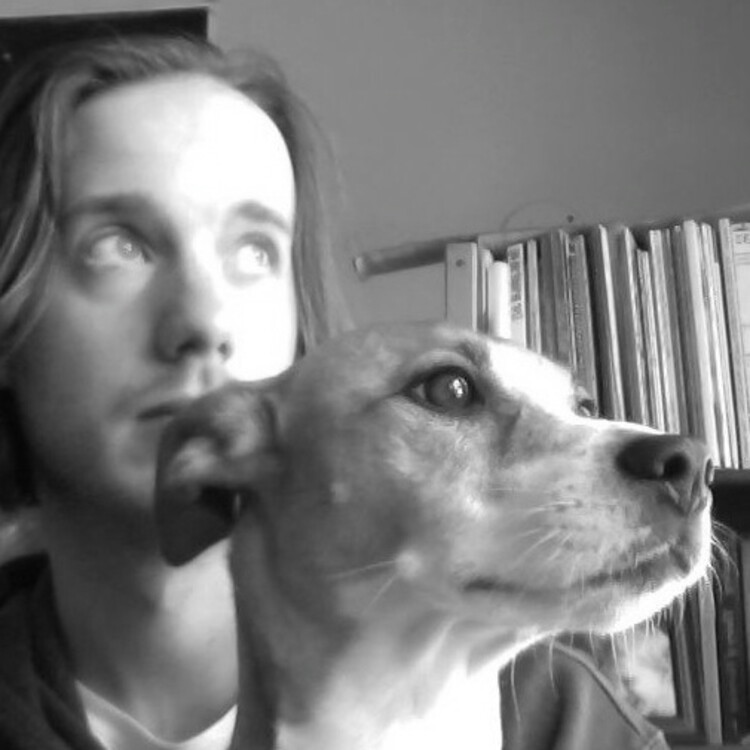
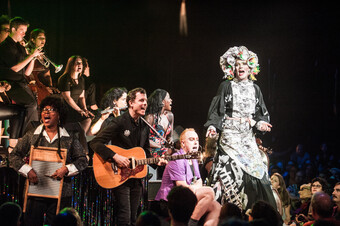

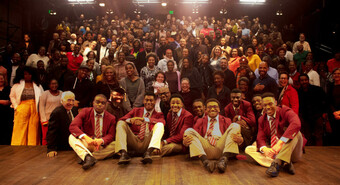

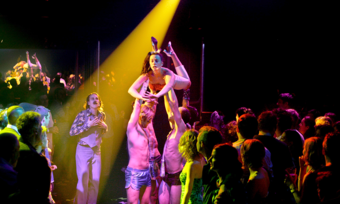

Comments
The article is just the start of the conversation—we want to know what you think about this subject, too! HowlRound is a space for knowledge-sharing, and we welcome spirited, thoughtful, and on-topic dialogue. Find our full comments policy here
Really nice to read about your experience - and definitely a beneficial read for those of us interested in this kind of work!
Thanks for this! It is a huge service to boil your experience down like this.
Great, clear reflection-- thanks Jacob.